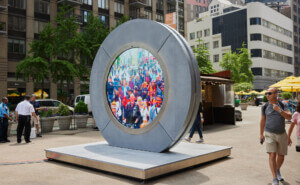The artist Frank Stella died at his home in Manhattan this weekend on May 4 at age 87. News of his passing was confirmed by his wife, Dr. Harriet E. McGurk, who said the cause was lymphoma.
Heartfelt remembrances about Stella were shared shortly after the news broke in The New York Times. On social media, Guggenheim described Stella as “among the most important American artists of the 20th century, a master of minimalist art who brought abstraction in brave new directions.”
Among his myriad achievements, Stella’s “black paintings” from the 1950s are remembered for ushering in a new epoch in art history. These studies, consisting of black strips on blank canvas, broke the zeitgeist away from abstract expressionism into a new, more minimalist and polychromatic future.
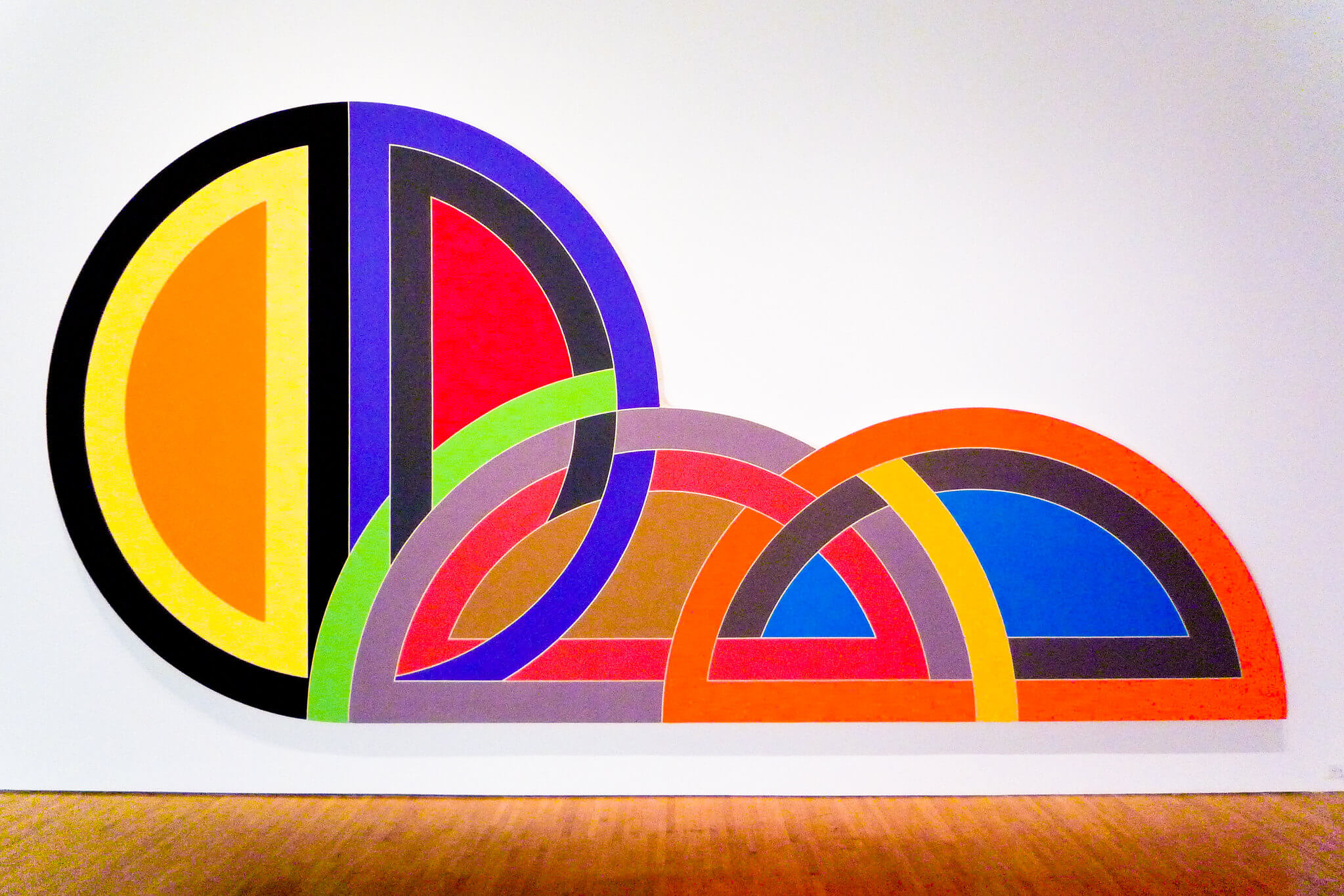
Stella was part of a generation of modern artists who often cross-pollinated with modern architects, much like James Turrell or the late Richard Serra. In the 1950s, Stella shared a studio space with Richard Meier, and the pair worked closely together as their careers blossomed. In 2017, Terrence Riley curated a show in New York about the friendship between Stella and Meier, entitled Richard Meier And Frank Stella: Space And Form.
One of Stella’s first forays into architecture came in 1967 when he designed the set for Scramble, a Merce Cunningham production. The late artist also had professional relationships with Frank Gehry and Philip Johnson. Today, several originals by Stella can be found in Johnson’s Glass House, including Protractors, Irregular Polygons and works from his Polish Village series.
In 2007, the Met hosted a solo-show for Stella that displayed his designs, including models, reliefs, drawings, and large-scale sculptures. That same year, Paul Goldberger wrote a monograph about Stella’s architecture on view at the Met, entitled Frank Stella: Painting into Architecture. In that publication, Stella told Goldberger that he consistently looked towards architects for inspiration, namely H.H. Richardson and his Converse Library, built not far from where Stella grew up outside Boston.
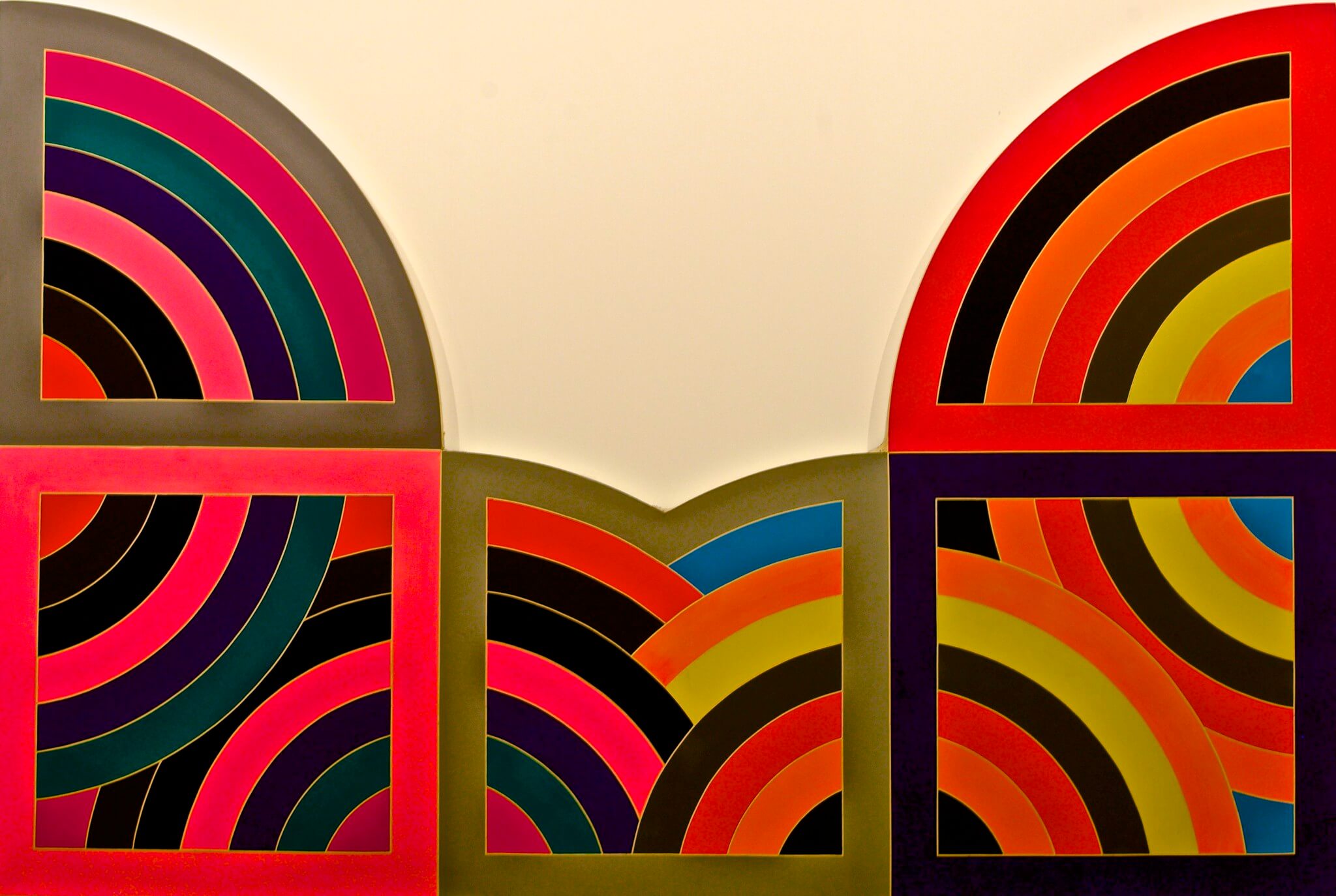
Frank Stella was born in 1936 in Malden, Massachusetts, into a family of first generation Italian-Americans. Both of his parents were doctors. In the early 1950s, Stella left Malden for Phillips Academy in Andover, Massachusetts—a famous boarding school.
At Phillips Academy, Stella studied art with Patrick Morgan and basked in the work of Jackson Pollock in Addison Gallery of American Art, the historic institution’s world-renowned art museum. Then he went off to Princeton University and studied medieval history. His professors, Stephen Greene and William Seitz, quickly took a liking to Stella and often took him into Manhattan on weekends to look at art.
Stella caught his first big break in 1959, age 23, when he was invited to contribute paintings at MoMA, in a group show curated by Dorothy C. Miller entitled 16 Americans, together with Ellsworth Kelly, Jasper Johns, Robert Rauschenberg, and other titans. The group show put the young Stella on the map, and the art world quickly began paying attention.
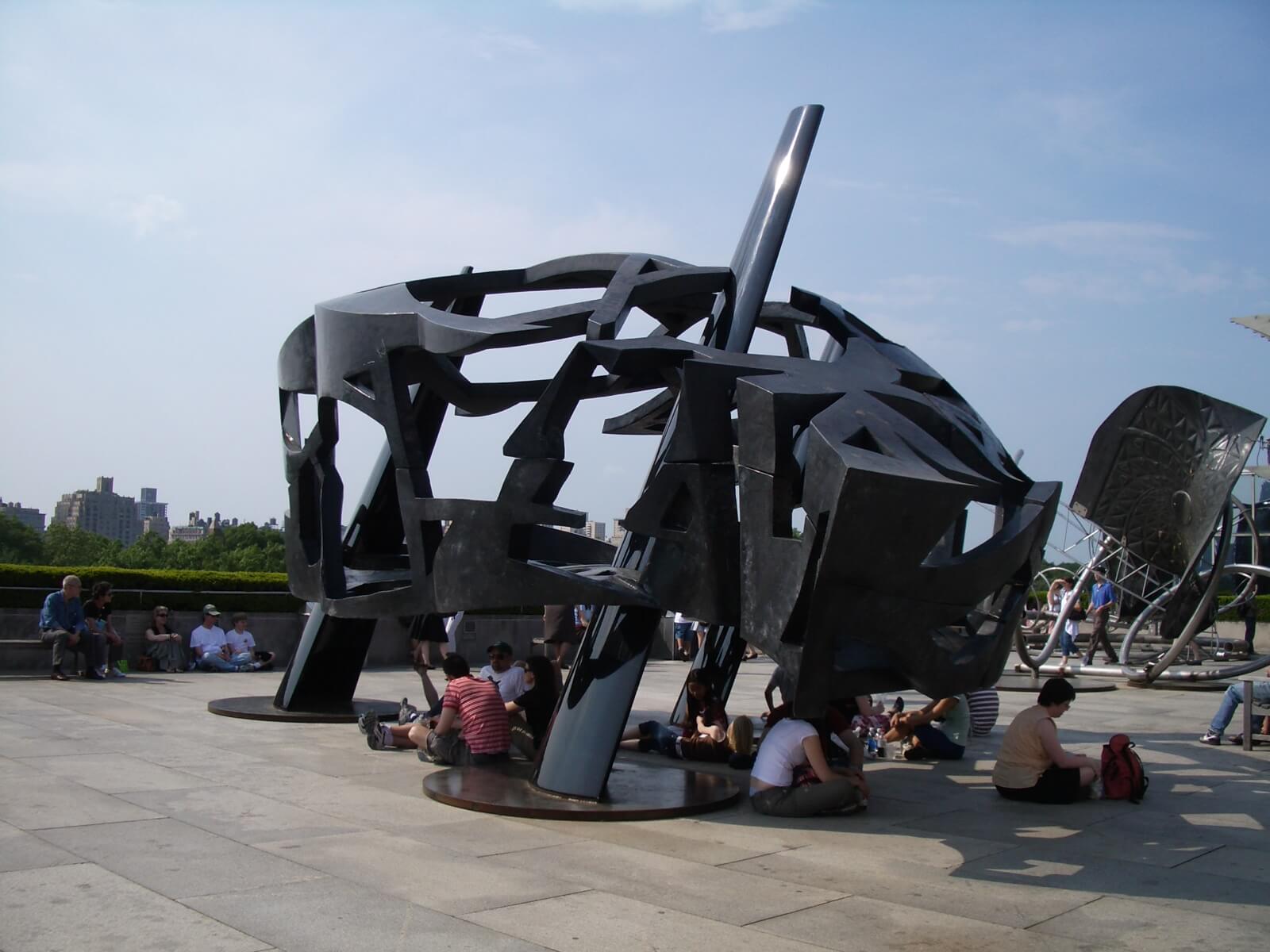
The famous collector Leo Castelli was one of the first art dealers to pick up on Stella’s genius. It was around that time when Castelli began amassing paintings by Stella, Jasper Johns, Lee Bontecou, and Edward Higgins.
After an inspirational trip to Iran he took in 1963, Stella launched a series of murals that he’d continue the rest of his life, Demascus Gates. Then in 1967, at Leo Castelli Gallery, Stella was further catapulted into the annals of modernism when his work appeared in another major group show. That same year, Stella partnered with Merce Cunningham on stage design for Scramble, concretizing his celebrity. In 1974, Stella lacquered the wall of David Mirvish Books in Toronto with one of his signature studies.
Overtime, Stella’s output increasingly went from 2D to 3D. In the 1980s and 1990s, he produced large sculptures with mind boggling proportions and jarring colors and materials. Some of his work from this period includes Talladega (1980), Polar Co-ordinates II (1980), and his series based on Herman Melville’s Moby Dick (1985-97). The latter series features 260 pieces including prints, sculptures, and reliefs based on chapters from Melville’s novel from 1851. Then in 1995, he completed Hooloomooloo, a floor mosaic at Reagan International Airport.
Stella had a retrospective at The Met in 1997, and then another ten years later. The 2007 show was meant to capture how increasingly architectural Stella’s thinking became later in life. In an interview about the show, Stella told Paul Goldberger: “Architecture might benefit from an infusion of the pictorial thought process, a process that is conditioned and defined by illusionism. I think the artistic process and painterly thought process have something to say to architecture today.”
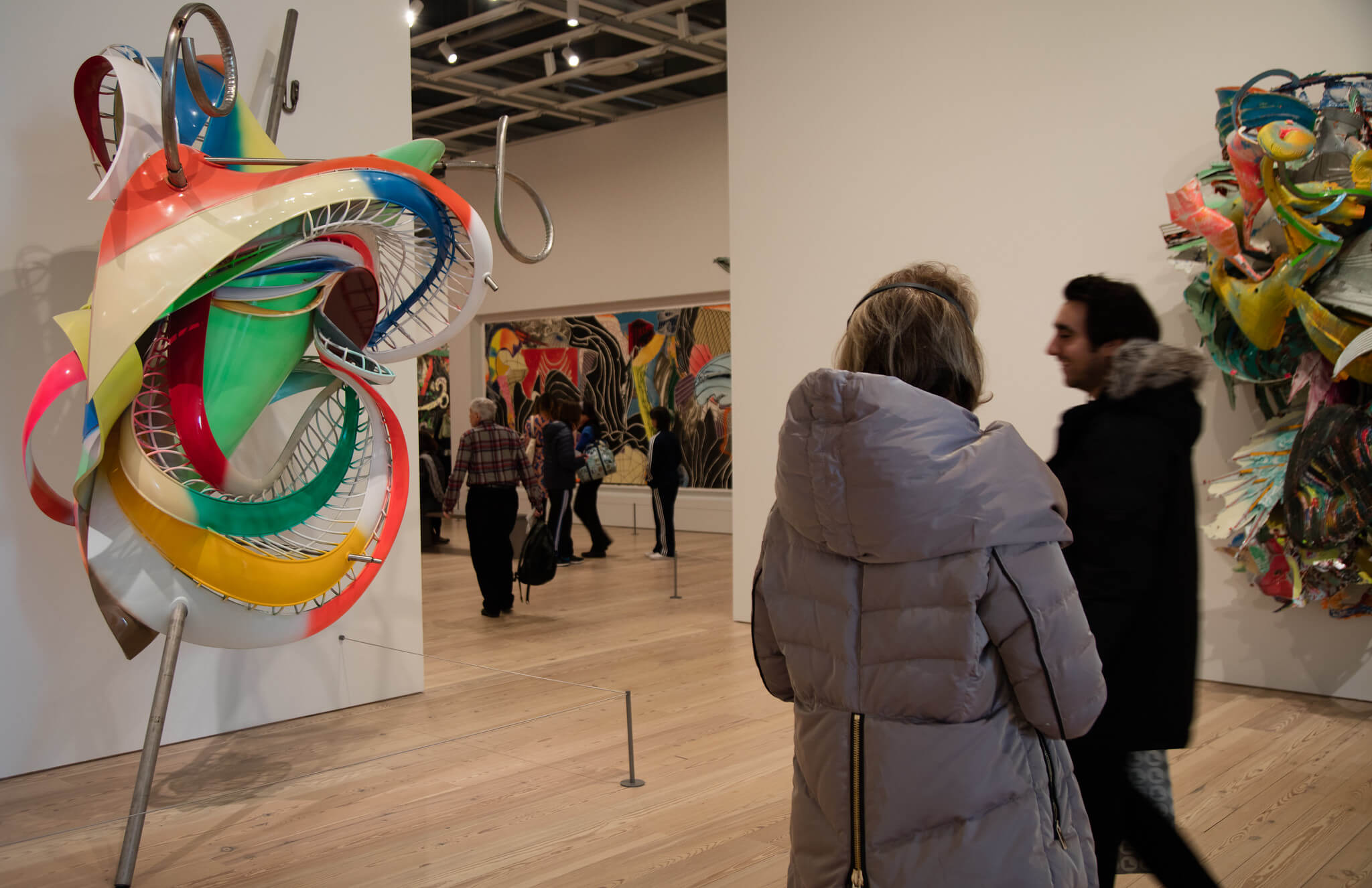
In 2015, a retrospective opened at the Whitney Museum of Art indebted to Stella. Then in 2016, Stella’s Puffed Star was relocated underneath Santiago Calatrava’s dramatic cantilever at Museum of Tomorrow in Rio de Janeiro, Brazil. Six years later, in 2022, a piece he completed in 1970, Damascus Gate (Stretch Variation I), was moved to Boston’s Seaport, marking a full circle for the Boston-born artist.
Today, Stella is survived by his wife, Dr. Harriet E. McGurk, and his four children Patrick, Rachel, Peter, and Michael.
Stella’s solo exhibition at Jeffrey Deitch Gallery, replete with five large sculptures by the late artist, is still on view through May 18.









